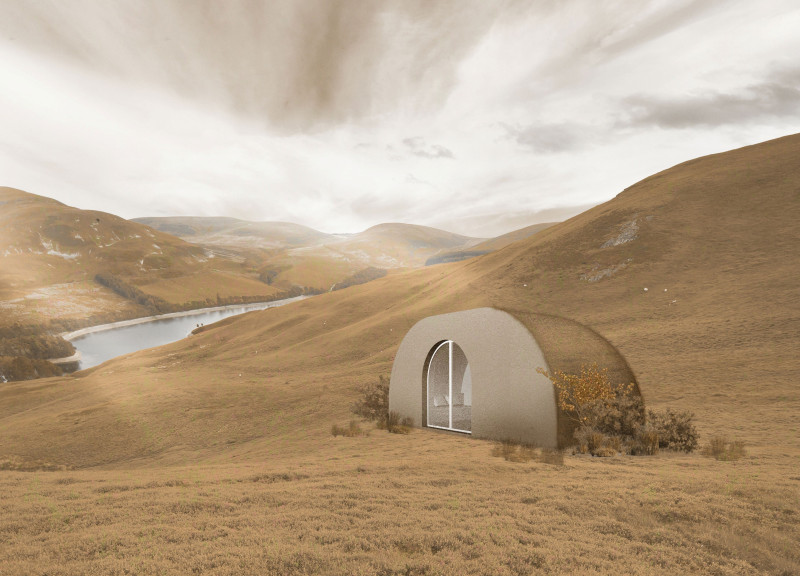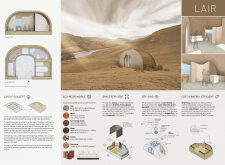5 key facts about this project
The design presents a thoughtful response to modern living, placing emphasis on integration with the natural environment. It is intended for various geographical settings, focusing on maximizing sunlight and utilizing rainfall effectively. By offering a multifunctional living experience, the project aims to promote both private and community interactions within a cohesive space.
Design Concept
At the core of the design is a central hub that acts as the heart of the cabin. This multifunctional core allows for a variety of uses, from quiet reflection to lively gatherings. The arrangement of utilities and dedicated spaces around this core is intentional, enabling a smooth flow throughout the interior. Different functions are defined but remain interconnected, supporting the goal of adaptable and versatile living arrangements.
Flexible Elements
The design includes various flexible elements that enhance the functionality of the interior. A curved partition wall serves to separate spaces while also allowing for privacy or openness as required. This adaptability fosters dynamic interactions among residents, making daily life in the cabin more responsive and enjoyable. The wall's ability to create different atmospheres exemplifies the intention behind the design, focusing on the needs of its users.
Sustainability Features
Sustainability plays a significant role in the overall vision. An off-grid solution is integrated into the design, featuring a solar window that generates electricity. Alongside this, a water collection system, known as Aquaweb by NexLoop, is positioned on the roof, effectively meeting the cabin's water needs. The option for additional water storage within the foundation further aligns with the commitment to self-sufficiency and environmental sustainability.
Material Choices
The choice of materials reflects the focus on environmental responsibility. Clay is used for the outer shell and the structural framework, achieved through 3D printing. Wood is evident in the flat surfaces and furniture, while kerf-cut timber adds functional and aesthetic qualities. Deployable MOLO furniture, including folding paper stools and tables, provides practical adaptability. Cotton is incorporated into futon mattresses and cushions, and rice straw features in the sleeping area, reinforcing local sourcing and sustainability.
The design creates a balanced environment that prioritizes practicality and connection to nature. Each element works together to form a cohesive and functional living space that responds to contemporary needs while remaining mindful of its environmental impact.




















































